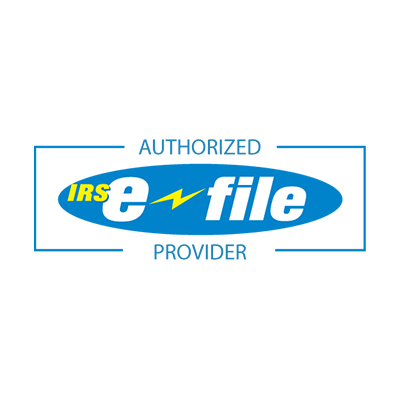As humans we like to know the status. We like to track progress, to know what stage we are in with respect to a project or process, to understand where we stand. What is the status of my loan application? Has it been approved? What is the status of this relationship? Are we officially dating? When we file our taxes, one of the first boxes we check is our filing status; are we filing as single or married? If married, filing jointly or separately? Speaking of taxes, it’s nice to know the status of our return. Has it been received? Has it been accepted? In what stage is it? For those who drive trucks for a living, there’s an added question: how can I check 2290 status?
The HVUT (Heavy Vehicle Use Tax), which is paid via Form 2290, is a tax levied on those who drive vehicles weighing 55,000 lbs or more and then allocated to highway improvement projects and maintenance of the infrastructure most impacted by these heavy vehicles.
For vehicles operated year over year and for vehicles initially commissioned by July 31 the deadline for filing Form 2290 is August 31. For vehicles initially commissioned after July, it is due on the last day of the month after the vehicle is first used on public roadways. With steep financial penalties for failure to file, missed deadlines, or errors on the form, truck drivers assuredly want a means to check 2290 status.
How to Check 2290 Status by Mail or Phone
Some may sneer and call it archaic in light of the current digital age, but some prefer to operate via mail or by phone. Written correspondence regarding Form 2290 can be sent to:
Internal Revenue Service
7940 Kentucky Drive
Florence, KY 41042-2915
Waiting for the postal service can be a test on one’s patience. For a more immediate answer there is a Form 2290 Call Site, which operates Monday – Friday between 8 a.m. and 6 p.m. Eastern time. The phone numbers are:
How to Check 2290 Status Online
The IRS e-file system provides a user-friendly platform for checking the status of Form 2290, accessible through the official IRS website. Users can easily log in or register on the IRS website to access their Form 2290 information.
Accurate submission of details like the Employer Identification Number (EIN) and Vehicle Identification Number (VIN) is crucial for checking the status. Correctly entering the EIN, VIN, and filing period is essential for retrieving the accurate status of Form 2290. Inaccuracies in data entry can lead to errors and delays in processing the form.
Different status indicators such as ‘Received’, ‘Processing’, and ‘Accepted’ convey the form’s current processing stage. Each status, from ‘Received’ to ‘Accepted’, indicates a specific phase in the Form 2290 processing timeline. Understanding these indicators helps filers gauge the time required for the form’s acceptance.
Implications of Different 2290 Statuses
When the status shows ‘Processing’, it is advisable to wait for a set period before taking further action. A typical waiting period for ‘Processing’ status could range from a few days to a couple of weeks. If the status remains ‘Processing’ for an extended period, contacting the IRS for clarification is recommended.
The ‘Received’ status signifies that the IRS has acknowledged the submission of Form 2290. Upon receiving the ‘Received’ status, filers should be prepared for possible additional documentation requests. This status is the first step in the journey towards form acceptance.
Achieving an ‘Accepted’ status marks the successful completion of the Form 2290 filing process. Once accepted, it is essential to download and store the stamped Schedule 1 as official proof of payment. Keeping a record of the ‘Accepted’ status and associated documents is crucial for compliance and future reference.
The Role of 2290 Status in Audits
Maintaining detailed records of Form 2290 filings and their statuses is a vital part of demonstrating tax compliance. These records serve as crucial evidence during tax audits and compliance checks. Organizing and safely storing Form 2290 documents ensures easy retrieval when needed.
Accurate 2290 records are indispensable during audits, showcasing adherence to tax regulations. Being familiar with the audit process and knowing what auditors seek can alleviate the stress of being audited. Effectively presenting Form 2290 records during an audit will make the process much simpler.
Peace of Mind with i2290
If you regularly check 2290 status and clearly understand status implications it will help avoid compliance issues and facilitate smooth business operations. The significance of Form 2290 extends beyond mere tax filing; it’s a commitment to legal and financial responsibility. Staying vigilant and informed about the status of Form 2290 is a proactive step towards ensuring uninterrupted business activities and avoiding penalties.
Not only will it take longer to check 2290 status by written correspondence, but there are numerous variables that could cause issues or delays, whether by fault of the IRS or the USPS. The same is true for filing the HVUT Form 2290 by mail; there’s no telling when you’ll receive your stamped Schedule 1, but those who e-file with i2290 will receive a stamped Schedule 1 in minutes, leaving little room to wonder whether your filing was accepted and processed.
Additionally, we’ll maintain a copy of that Schedule 1 for seven years so you always have access to it when you need it, making short work of audit preparation should that need arise. With i2290, you can file your return at any time, from any place. Our staff is happy to help guide you through the process, and you can rest assured that there will never be hidden costs or surprise fees. Ready to bypass the penalties, attain peace of mind, and file your Form 2290 online in a matter of minutes? Create an account with us today!
Special note: This article is for general purposes, and is not intended to provide, and should not be relied on for tax, legal, investment, or accounting advice. The best way to ensure you’re properly filing and paying appropriate taxes is by following IRS regulations and consulting with a tax professional.


